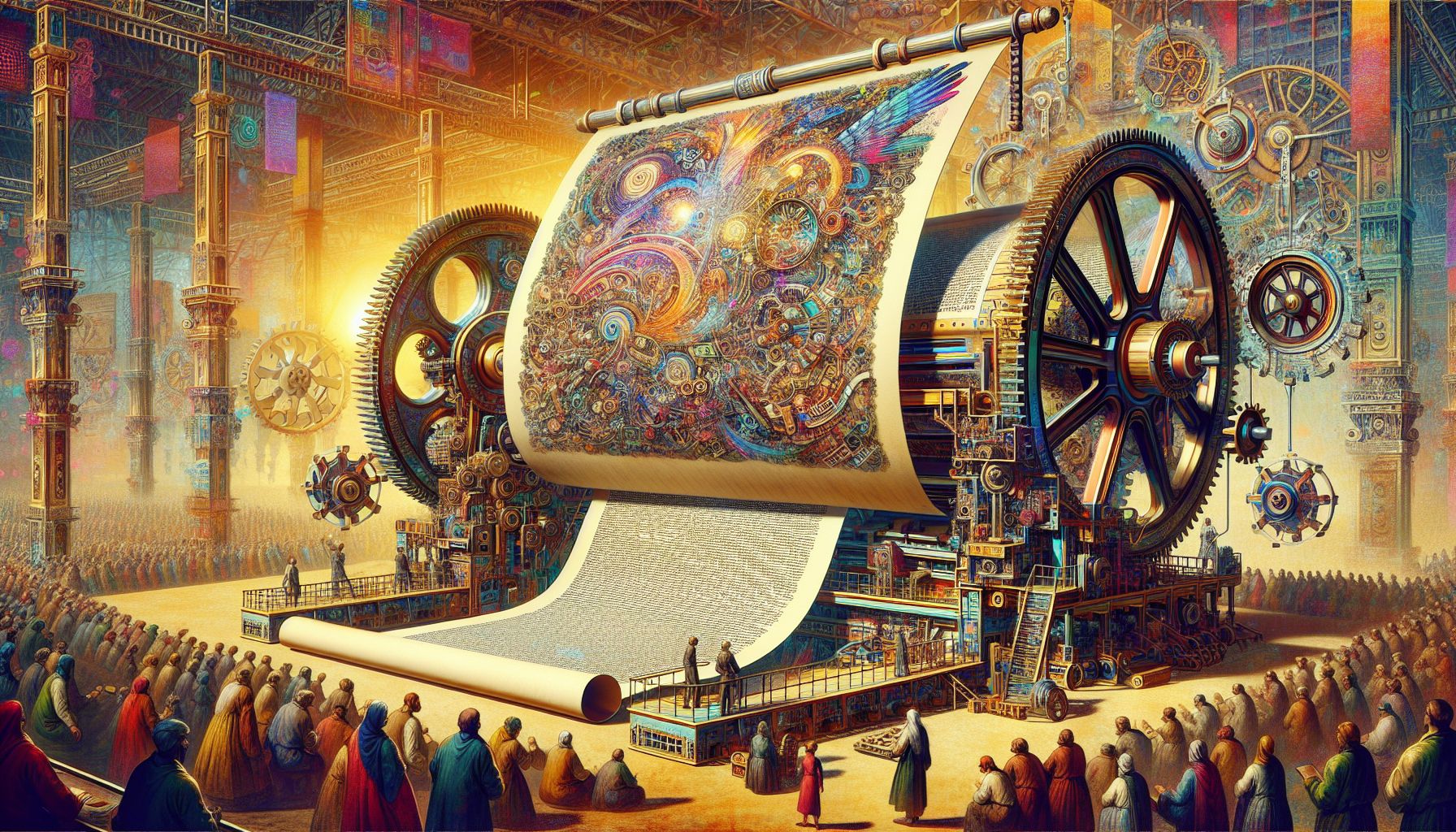📌 Let’s explore the topic in depth and see what insights we can uncover.
⚡ “Picture this: you type, ‘an armchair in the shape of an avocado’, and voila! An artificial intelligence creates that exact image. Welcome to the magic of DALL·E.”
Welcome to the future of art and creativity, where machine learning algorithms breathe life into our wildest imaginations. Say hello to DALL·E, an Artificial Intelligence (AI) developed by OpenAI, which can transform your textual descriptions into surreal, vivid, and sometimes even peculiar images. 🎨 We’ve seen AI compose music, write poetry, and even script movies. Now, with DALL·E, we’re witnessing AI’s ability to generate images that are not just visually appealing, but also rich in detail and creativity. But how does DALL·E accomplish this? This blog post delves deep into the fascinating world of AI image generation, exploring the concepts and mechanisms that allow DALL·E to create these stunning visual representations from simple text prompts.
🧠 Decoding DALL·E: An Overview

"Unveiling DALL·E's Magic: From Text Prompts to Images"
DALL·E, a pun on the surrealist artist Salvador Dali and Pixar’s WALL-E, is a variant of GPT-3, an advanced language processing AI. While GPT-3 excels at understanding and generating text, DALL·E leverages this capability to interpret text prompts and generate corresponding images. DALL·E is trained on a diverse range of internet images. However, it’s not just creating a patchwork quilt of these images. It’s synthesizing new, original images that align with the input text, even if the prompt describes a surreal or never-existed-before object.
Let’s dive deeper into how DALL·E manages this spellbinding feat.
🧩 The Building Blocks of DALL·E: Transformer Networks
The backbone of DALL·E and its sibling, GPT-3, is a machine learning model known as a transformer network. The transformer network is a type of deep learning model that excels in handling sequential data, such as a series of words in a sentence or pixels in an image. What sets transformers apart is their ability to handle long-range dependencies, meaning they can connect and understand the relationship between elements even if they are far apart in the sequence. This feature is crucial for creating coherent and contextually accurate images. DALL·E’s transformer network consists of 12 billion parameters, tiny tuning knobs that the model adjusts to improve its performance during training. By adjusting these parameters, DALL·E learns to generate images that best align with the corresponding text prompts.
📚 Learning from Text: DALL·E’s Training Process
The training process of DALL·E is a fascinating journey of mapping text prompts to matching visual representations. Under the hood, this process is a high-level example of supervised learning, a type of machine learning where the model learns from labeled data. The training dataset for DALL·E consists of pairs of text descriptions and corresponding images. When fed a new text prompt, DALL·E uses what it learned during training to generate a related image. The training process involves the following steps:
Tokenization
DALL·E first breaks down the text and image into smaller pieces, or tokens. For text, these tokens can be as small as a single character or as large as a word. For images, these tokens are typically small patches of the image.
Sequence Creation
The tokens are then arranged into a sequence. This sequence allows DALL·E to understand the relationship between different parts of the text and image.
Model Training
DALL·E is then trained to predict the next token in the sequence based on the previous tokens. This process allows DALL·E to learn the relationship between the text and image tokens, and how they form a coherent whole. Through this rigorous training process, DALL·E learns to create images that accurately reflect the input text prompts.
🎨 Unleashing Creativity: How DALL·E Generates Images
Once trained, DALL·E is ready to generate images from text prompts. Let’s say we feed it a prompt like “a two-story pink house shaped like a shoe.” Here’s how DALL·E would go about creating this image:
Text Processing
DALL·E processes the prompt and breaks it down into tokens, similar to the tokenization step in the training process.
Image Generation
DALL·E then generates a sequence of image tokens based on the text tokens. It uses its learned understanding of how certain text descriptions correspond to certain features in an image.
Refinement
DALL·E refines the image tokens, tuning them until they form a coherent and accurate representation of the text prompt.
Image Rendering
Finally, DALL·E combines the image tokens to render a full image. This final product is a detailed, visually striking representation of the original text prompt.
🧭 Conclusion
DALL·E is a giant leap forward in the AI world, demonstrating the immense creative potential of machine learning algorithms. By marrying language understanding with image generation, DALL·E opens up a world of possibilities, ranging from creating personalized artwork to designing unique product prototypes. However, DALL·E also raises important questions about authorship, creativity, and the implications of AI-generated art. As we continue to explore and push the boundaries of what AI can do, we must also grapple with these complex issues. In the meantime, DALL·E stands as a testament to the power and potential of AI, a digital artist capable of turning our wildest textual dreams into visual reality. It’s an exciting time to be at the intersection of AI and creativity, and we can’t wait to see what the future holds! 🚀
🚀 Curious about the future? Stick around for more discoveries ahead!
